Saussurea lappa Exhibits Anti-Oncogenic Effect in Hepatocellular Carcinoma, HepG2 Cancer Cell Line by Bcl-2 Mediated Apoptotic Pathway and Mitochondrial Cytochrome C Release
Abstract
:1. Introduction
- (a)
- Determination of various pharmacognostical parameters of the root of S. lappa including preparation of chloroform, n-butanol, and ethyl acetate extract fractions from the root of S. lappa and their physicochemical testing.
- (b)
- Gas chromatography–mass spectroscopy (GC–MS) analysis of the different extracts.
- (c)
- Evaluation of the anticancer activity of n-butanol S. lappa extract by employing the in vitro cytotoxic assay method (MTT assay) against HepG2 cell lines.
- (d)
- Exploring mechanism of action of n-butanol S. lappa extract against HepG2 cell lines using double staining with acridine orange (AO)-ethidium bromide (EB), the cytochrome C release apoptosis assay, and gene expression studies.
2. Materials and Methods
2.1. Collection and Preparation of Plant Root Extract
2.2. Phyto-Chemical Analysis
2.3. GC–MS Analysis of S. lappa Root Extracts
2.4. Anti-Oxidant Assays
2.4.1. DPPH (2,2-diphenyl-1-picrylhydrazyl) Free Radical Scavenging Assay
2.4.2. Ferrous Reducing Antioxidant Capacity Assay (FRAC)
2.5. Anticancer Activity Assessment of S. lappa Root Extract
2.5.1. Cell Culture
2.5.2. In Vitro Cytotoxic Assay (MTT Assay) Method
2.6. Apoptosis Assessment with Acridine Orange–Ethidium Bromide Staining
2.7. Cytochrome C Releasing Apoptosis Assay
2.8. Gene Quantification by qRT-PCR
2.9. Statistical Analysis
3. Results
3.1. Phytochemical Analysis
3.2. Identification of S. Lappa Root Components by GC–MS Analysis
3.3. Antioxidant Assays
3.4. Anticancer Activity of S. lappa N-Butanol Root Extract
3.5. Apoptosis Assessment with Acridine Orange–Ethidium Bromide Double Staining Assay of S. lappa N-Butanol Root Extract
3.6. Cytochrome C Releasing Apoptosis Assay
3.7. Gene Quantification by qRT-PCR
4. Discussion
5. Conclusions
Supplementary Materials
Author Contributions
Funding
Institutional Review Board Statement
Informed Consent Statement
Data Availability Statement
Conflicts of Interest
References
- Parkin, D.M.; Bray, F.; Ferlay, J.; Pisani, P. Global cancer statistics, 2002. CA Cancer J. Clin. 2005, 55, 74–108. [Google Scholar] [CrossRef]
- Bruix, J.; Sherman, M.; Llovet, J.M.; Beaugrand, M.; Lencioni, R.; Burroughs, A.K.; Christensen, E.; Pagliaro, L.; Colombo, M.; Rodes, J. Clinical management of hepatocellular carcinoma. Conclusions of the Barcelona-2000 EASL conference. European Association for the Study of the Liver. J. Hepatol. 2001, 35, 421–430. [Google Scholar] [CrossRef]
- Llovet, J.M.; Burroughs, A.; Bruix, J. Hepatocellular carcinoma. Lancet 2003, 362, 1907–1917. [Google Scholar] [CrossRef] [Green Version]
- Villanueva, A.; Llovet, J.M. Targeted therapies for hepatocellular carcinoma. Gastroenterology. 2011, 140, 1410–1426. [Google Scholar] [CrossRef] [Green Version]
- Llovet, J.M.; Ricci, S.; Mazzaferro, V.; Hilgard, P.; Gane, E.; Blanc, J.F.; de Oliveira, A.C.; Santoro, A.; Raoul, J.L.; Forner, A.; et al. Sorafenib in advanced hepatocellular carcinoma. N. Engl. J. Med. 2008, 359, 378–390. [Google Scholar] [CrossRef]
- Bindseil, K.U.; Jakupovic, J.; Wolf, D.; Lavayre, J.; Leboul, J.; van der Pyl, D. Pure compound libraries; a new perspective for natural product based drug discovery. Drug Discov Today. 2001, 6, 840–847. [Google Scholar] [CrossRef]
- Lin, X.; Peng, Z.; Su, C. Potential anti-cancer activities and mechanisms of costunolide and dehydrocostuslactone. Int. J. Mol. Sci. 2015, 16, 10888–10906. [Google Scholar] [CrossRef] [PubMed] [Green Version]
- Pan, L.; Chai, H.; Kinghorn, A.D. The continuing search for antitumor agents from higher plants. Phytochem. Lett. 2010, 3, 1–8. [Google Scholar] [CrossRef] [PubMed] [Green Version]
- Pandey, M.M.; Rastogi, S.; Rawat, A.K. Saussurea costus: Botanical, chemical and pharmacological review of an ayurvedic medicinal plant. J. Ethnopharmacol. 2007, 110, 379–390. [Google Scholar] [CrossRef] [PubMed]
- Chhabra, B.; Gupta, S.; Jain, M.; Kalsi, P. Sesquiterpene lactones from Saussurea lappa. Phytochemistry 1998, 49, 801–804. [Google Scholar] [CrossRef]
- Yang, W.; Chen, X.; Li, Y.; Guo, S.; Wang, Z.; Yu, X. Advances in Pharmacological Activities of Terpenoids. Nat. Prod. Commun. 2020, 15, 1934578X20903555. [Google Scholar] [CrossRef] [Green Version]
- Andrade, L.N.; Lima, T.C.; Amaral, R.G.; Pessoa, C.D.Ó.; Filho, M.O.d.M.; Soares, B.M.; Nascimento, L.G.d.; Carvalho, A.A.; De Sousa, D.P. Evaluation of the Cytotoxicity of Structurally Correlated p-Menthane Derivatives. Molecules 2015, 20, 13264–13280. [Google Scholar] [CrossRef] [PubMed] [Green Version]
- Gai, W.T.; Yu, D.P.; Wang, X.S.; Wang, P.T. Anti-cancer effect of ursolic acid activates apoptosis through ROCK/PTEN mediated mitochondrial translocation of cofilin-1 in prostate cancer. Oncol. Let. Oncol. Lett. 2016, 12, 2880–2885. [Google Scholar] [CrossRef] [PubMed]
- Duangmano, S.; Dakeng, S.; Jiratchariyakul, W.; Suksamrarn, A.; Smith, D.R.; Patmasiriwat, P. Antiproliferative effects of cucurbitacin B in breast cancer cells: Down-regulation of the c-Myc/hTERT/telomerase pathway and obstruction of the cell cycle. Int. J. Mol. Sci. 2010, 11, 5323–5338. [Google Scholar] [CrossRef] [PubMed] [Green Version]
- Zhu, X.-Y.; Guo, D.-W.; Lao, Q.-C.; Xu, Y.-Q.; Meng, Z.-K.; Xia, B.; Yang, H.; Li, C.-Q.; Li, P. Sensitization and synergistic anti-cancer effects of Furanodiene identified in zebrafish models. Sci. Rep. 2019, 9, 4541. [Google Scholar] [CrossRef]
- Chadwick, M.; Trewin, H.; Gawthrop, F.; Wagstaff, C. Sesquiterpenoids lactones: Benefits to plants and people. Int. J. Mol. Sci. 2013, 14, 12780–12805. [Google Scholar] [CrossRef] [Green Version]
- Kretschmer, N.; Rinner, B.; Stuendl, N.; Kaltenegger, H.; Wolf, E.; Kunert, O.; Boechzelt, H.; Leithner, A.; Bauer, R.; Lohberger, B. Effect of costunolide and dehydrocostus lactone on cell cycle, apoptosis, and ABC transporter expression in human soft tissue sarcoma cells. Planta Medica 2012, 78, 1749–1756. [Google Scholar] [CrossRef]
- Sun, C.M.; Syu, W.J.; Don, M.J.; Lu, J.J.; Lee, G.H. Cytotoxic sesquiterpene lactones from the root of Saussurea lappa. J. Nat. Prod. 2003, 66, 1175–1180. [Google Scholar] [CrossRef]
- Yoshikawa, M.; Hatakeyama, S.; Inoue, Y.; Yamahara, J. Saussureamines A, B, C, D, and E, new anti-ulcer principles from Chinese Saussureae Radix. Chem. Pharm. Bull. 1993, 41, 214–216. [Google Scholar] [CrossRef] [Green Version]
- Chen, H.C.; Chou, C.K.; Lee, S.D.; Wang, J.C.; Yeh, S.F. Active compounds from Saussurea lappa Clarks that suppress hepatitis B virus surface antigen gene expression in human hepatoma cells. Antivir. Res. 1995, 27, 99–109. [Google Scholar] [CrossRef]
- Tabata, K.; Nishimura, Y.; Takeda, T.; Kurita, M.; Uchiyama, T.; Suzuki, T. Sesquiterpene lactones derived from Saussurea lappa induce apoptosis and inhibit invasion and migration in neuroblastoma cells. J. Pharmacol Sci. 2015, 127, 397–403. [Google Scholar] [CrossRef] [PubMed] [Green Version]
- Hung, J.Y.; Hsu, Y.L.; Ni, W.C.; Tsai, Y.M.; Yang, C.J.; Kuo, P.L.; Huang, M.S. Oxidative and endoplasmic reticulum stress signaling are involved in dehydrocostuslactone-mediated apoptosis in human non-small cell lung cancer cells. Lung Cancer 2010, 68, 355–365. [Google Scholar] [CrossRef]
- Kim, H.R.; Kim, J.M.; Kim, M.S.; Hwang, J.K.; Park, Y.J.; Yang, S.H.; Kim, H.J.; Ryu, D.G.; Lee, D.S.; Oh, H.; et al. Saussurea lappa extract suppresses TPA-induced cell invasion via inhibition of NF-kappaB-dependent MMP-9 expression in MCF-7 breast cancer cells. BMC Complement. Altern Med. 2014, 14, 170. [Google Scholar] [CrossRef] [Green Version]
- Tian, X.; Song, H.S.; Cho, Y.M.; Park, B.; Song, Y.J.; Jang, S.; Kang, S.C. Anticancer effect of Saussurea lappa extract via dual control of apoptosis and autophagy in prostate cancer cells. Medicine 2017, 96, e7606. [Google Scholar] [CrossRef]
- Ong, E.S. Extraction methods and chemical standardization of botanicals and herbal preparations. J. Chromatogr. B Analyt. Technol. Biomed. Life Sci. 2004, 812, 23–33. [Google Scholar] [CrossRef]
- Khandelwal, K.R. Practical Pharmacognosy; Pragati Books Pvt. Ltd.: Pune, India, 2008. [Google Scholar]
- Kokate, C.; Purohit, A.; Gokhale, S. Carbohydrate and derived Products, drugs containing glycosides, drugs containing tannins, lipids and protein alkaloids. Text. Book Pharmacogn. 2001, 7, 133–166. [Google Scholar]
- Gwari, G.; Bhandari, U.; Andola, H.C.; Lohani, H.; Chauhan, N. Volatile constituents of Saussurea costus roots cultivated in Uttarakhand Himalayas, India. Pharmacogn. Res. 2013, 5, 179–182. [Google Scholar]
- Sahoo, S.; Ghosh, G.; Das, D.; Nayak, S. Phytochemical investigation and in vitro antioxidant activity of an indigenous medicinal plant Alpinia nigra B.L. Burtt. Asian Pac. J. Trop Biomed. 2013, 3, 871–876. [Google Scholar] [CrossRef] [Green Version]
- Cory, A.H.; Owen, T.C.; Barltrop, J.A.; Cory, J.G. Use of an aqueous soluble tetrazolium/formazan assay for cell growth assays in culture. Cancer Commun. 1991, 3, 207–212. [Google Scholar] [CrossRef]
- Aithal, B.K.; Kumar, M.R.; Rao, B.N.; Udupa, N.; Rao, B.S. Juglone, a naphthoquinone from walnut, exerts cytotoxic and genotoxic effects against cultured melanoma tumor cells. Cell Biol. Int. 2009, 33, 1039–1049. [Google Scholar] [CrossRef] [PubMed]
- Waterhouse, N.J.; Trapani, J.A. A new quantitative assay for cytochrome c release in apoptotic cells. Cell Death Differ. 2003, 10, 853–855. [Google Scholar] [CrossRef] [Green Version]
- McGlynn, K.A.; London, W.T. Epidemiology and natural history of hepatocellular carcinoma. Best Pr. Res. Clin. Gastroenterol. 2005, 19, 3–23. [Google Scholar] [CrossRef]
- Abdo, A.; Al Abdul Karim, H.; Al Fuhaid, T.; Sanai, F.; Kabbani, M.; Al Jumah, A.; Burak, K. Saudi gastroenterology association guidelines for the diagnosis and management of hepatocellular carcinoma: Summary of recommendations. Saudi J. Gastroenterol. 2007, 13, 45–48. [Google Scholar] [CrossRef] [PubMed]
- Abdo, A.A.; Hassanain, M.; AlJumah, A.; Al Olayan, A.; Sanai, F.M.; Alsuhaibani, H.A.; Abdulkareem, H.; Abdallah, K.; AlMuaikeel, M.; Al Saghier, M.; et al. Saudi guidelines for the diagnosis and management of hepatocellular carcinoma: Technical review and practice guidelines. Ann. Saudi Med. 2012, 32, 174–199. [Google Scholar] [CrossRef] [PubMed]
- Chang, K.M.; Choi, S.I.; Kim, G.H. Anti-oxidant Activity of Saussurea lappa C.B. Clarke Roots. Prev. Nutr. Food Sci. 2012, 17, 306–309. [Google Scholar] [CrossRef] [PubMed]
- Lee, M.G.; Lee, K.T.; Chi, S.G.; Park, J.H. Costunolide induces apoptosis by ROS-mediated mitochondrial permeability transition and cytochrome C release. Biol. Pharm. Bull. 2001, 24, 303–306. [Google Scholar] [CrossRef] [Green Version]
- Hanahan, D.; Weinberg, R.A. Hallmarks of cancer: The next generation. Cell 2011, 144, 646–674. [Google Scholar] [CrossRef] [Green Version]
- Moon, S.M.; Yun, S.J.; Kook, J.K.; Kim, H.J.; Choi, M.S.; Park, B.R.; Kim, S.G.; Kim, B.O.; Lee, S.Y.; Ahn, H.; et al. Anticancer activity of Saussurea lappa extract by apoptotic pathway in KB human oral cancer cells. Pharm. Biol. 2013, 51, 1372–1377. [Google Scholar] [CrossRef]
- Shati, A.A.; Alkahtani, M.A.; Alfaifi, M.Y.; Elbehairi, S.E.I.; Elsaid, F.G.; Prasanna, R.; Mir, M.A. Secondary Metabolites of Saussurea costus Leaf Extract Induce Apoptosis in Breast, Liver, and Colon Cancer Cells by Caspase-3-Dependent Intrinsic Pathway. BioMed Res. Int. 2020, 2020, 1608942. [Google Scholar] [CrossRef]
- Li, Y.Z.; Li, C.J.; Pinto, A.V.; Pardee, A.B. Release of mitochondrial cytochrome C in both apoptosis and necrosis induced by beta-lapachone in human carcinoma cells. Mol. Med. 1999, 5, 232–239. [Google Scholar] [CrossRef] [Green Version]
- Cohen, G.M. Caspases: The executioners of apoptosis. Biochem. J. 1997, 326, 1–16. [Google Scholar] [CrossRef] [Green Version]
- Green, D.R.; Reed, J.C. Mitochondria and apoptosis. Science 1998, 281, 1309–1312. [Google Scholar] [CrossRef]
- Liu, X.; Zou, H.; Slaughter, C.; Wang, X. DFF, a heterodimeric protein that functions downstream of caspase-3 to trigger DNA fragmentation during apoptosis. Cell 1997, 89, 175–184. [Google Scholar] [CrossRef] [Green Version]
- Rajabi, S.; Maresca, M.; Yumashev, A.V.; Choopani, R.; Hajimehdipoor, H. The Most Competent Plant-Derived Natural Products for Targeting Apoptosis in Cancer Therapy. Biomolecules 2021, 11, 534. [Google Scholar] [CrossRef]
- Naowaratwattana, W.; De-Eknamkul, W.; De Mejia, E.G. Phenolic-containing organic extracts of mulberry (Morus alba L.) leaves inhibit HepG2 hepatoma cells through G2/M phase arrest, induction of apoptosis, and inhibition of topoisomerase IIα activity. J. Med. Food 2010, 13, 1045–1056. [Google Scholar] [CrossRef]
- Cho, B.O.; Jin, C.H.; Park, Y.D.; Ryu, H.W.; Byun, M.W.; Seo, K.I.; Jeong, I.Y. Isoegomaketone induces apoptosis through caspase-dependent and caspase-independent pathways in human DLD1 cells. Biosci. Biotechnol. Biochem. 2011, 75, 1306–1311. [Google Scholar] [CrossRef] [Green Version]
- Wang, Y.; Huang, X.; Han, J.; Zheng, W.; Ma, W. Extract of Perilla frutescens inhibits tumor proliferation of HCC via PI3K/AKT signal pathway. Afr. J. Tradit. Complement. Altern. Med. 2013, 10, 251–257. [Google Scholar] [CrossRef] [PubMed]
- Peng, Z.; Wang, Y.; Fan, J.; Lin, X.; Liu, C.; Xu, Y.; Ji, W.; Yan, C.; Su, C. Costunolide and dehydrocostuslactone combination treatment inhibit breast cancer by inducing cell cycle arrest and apoptosis through c-Myc/p53 and AKT/14-3-3 pathway. Sci. Rep. 2017, 7, 41254. [Google Scholar] [CrossRef] [PubMed] [Green Version]
- Wang, H.; Ye, Y.; Pan, S.Y.; Zhu, G.Y.; Li, Y.W.; Fong, D.W.; Yu, Z.L. Proteomic identification of proteins involved in the anticancer activities of oridonin in HepG2 cells. Phytomedicine 2011, 18, 163–169. [Google Scholar] [CrossRef] [PubMed]
- Jigna, P.; Rathish, N.; Sumitra, C. Preliminary screening of some folklore medicinal plants from western India for potential antimicrobial activity. Indian J. Pharmacol. 2005, 37, 408. [Google Scholar]

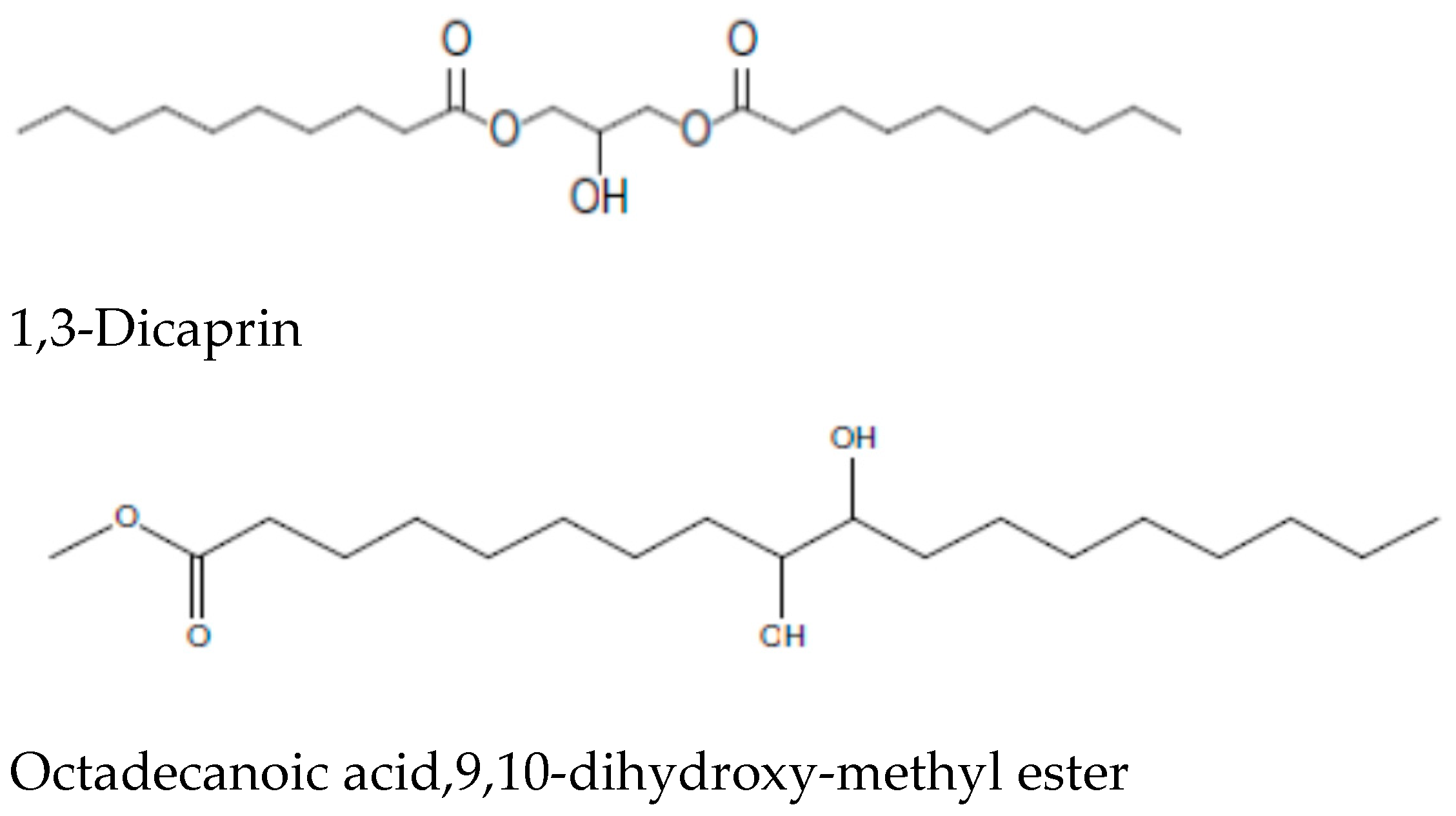
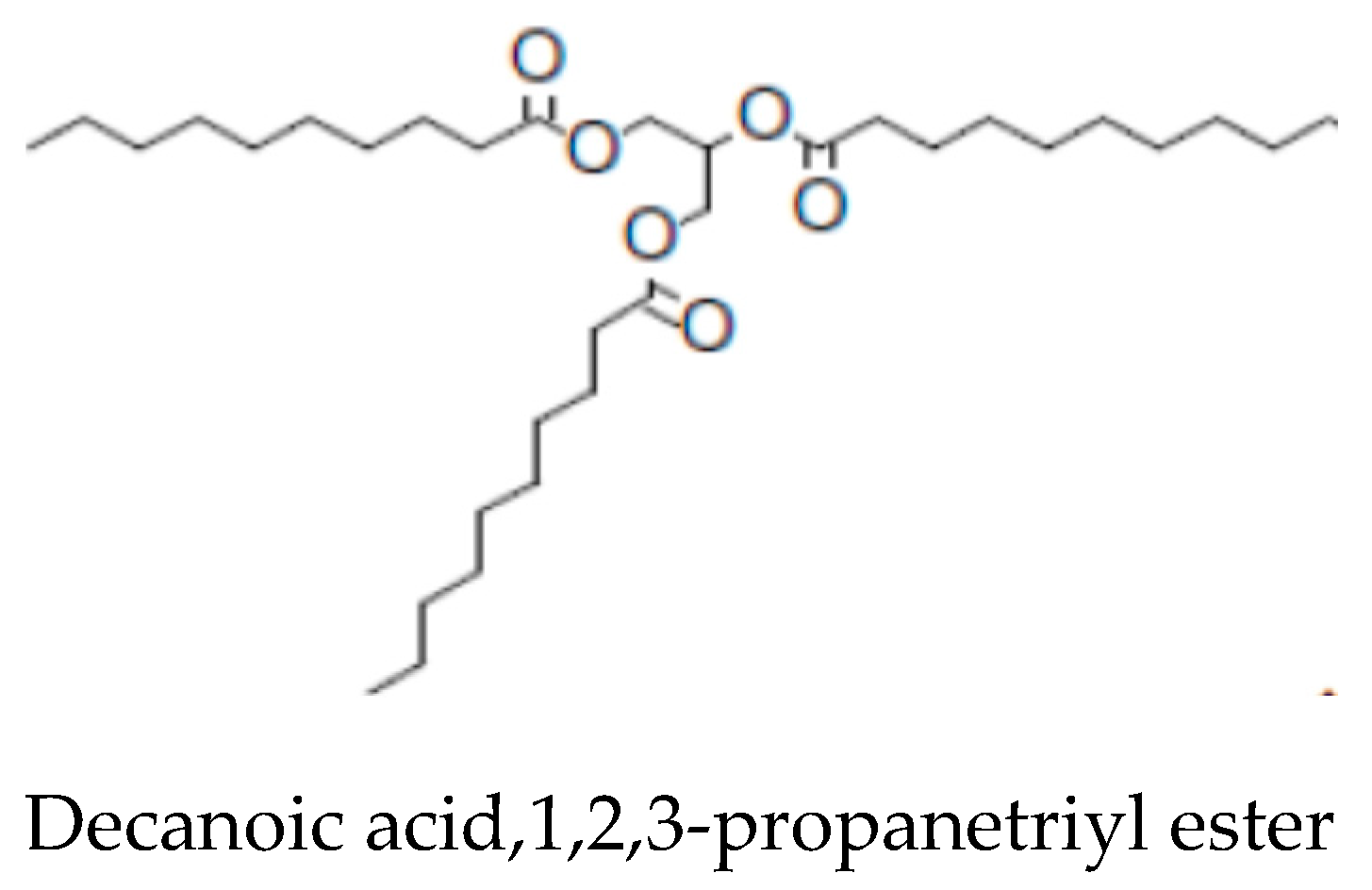
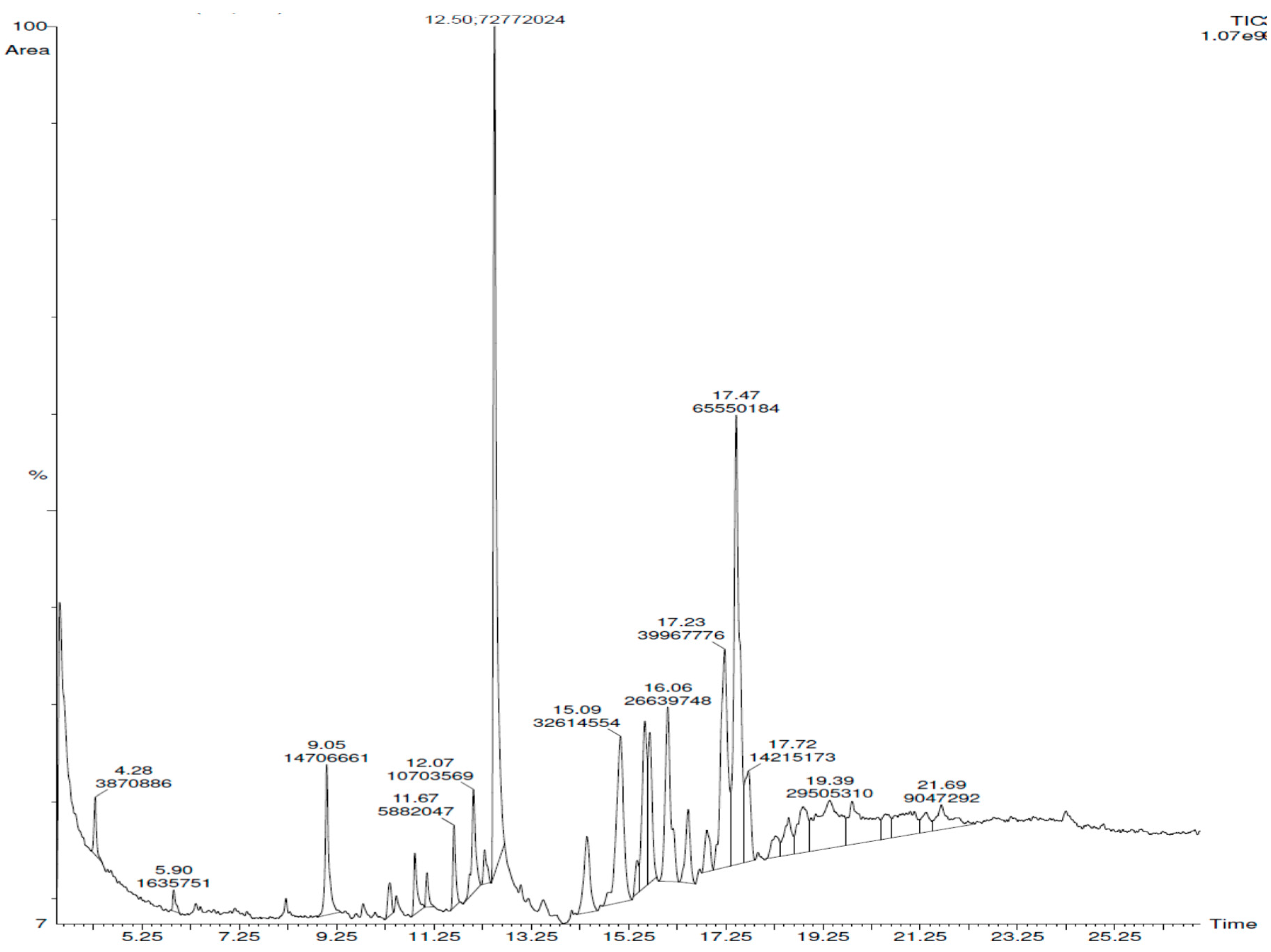
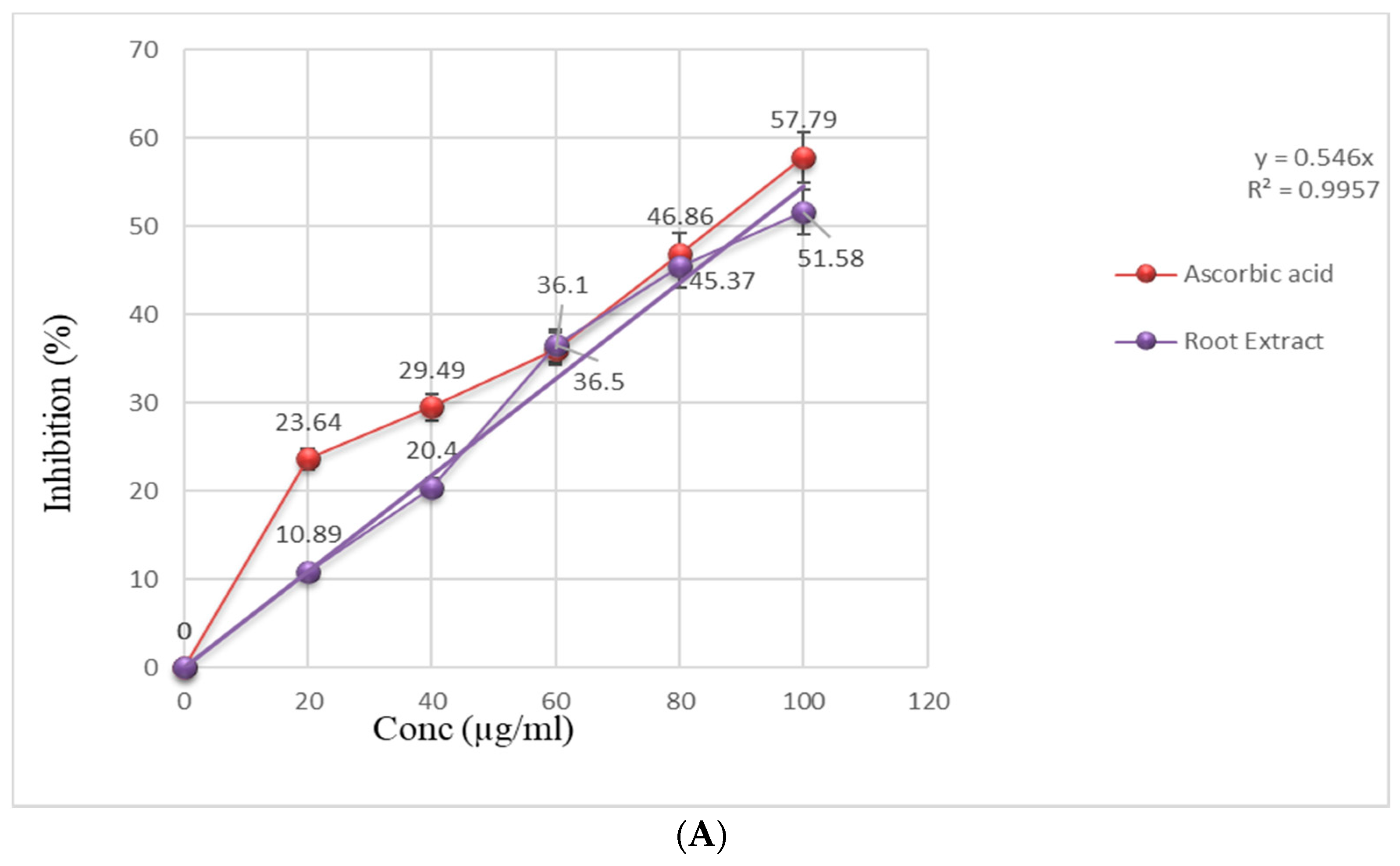
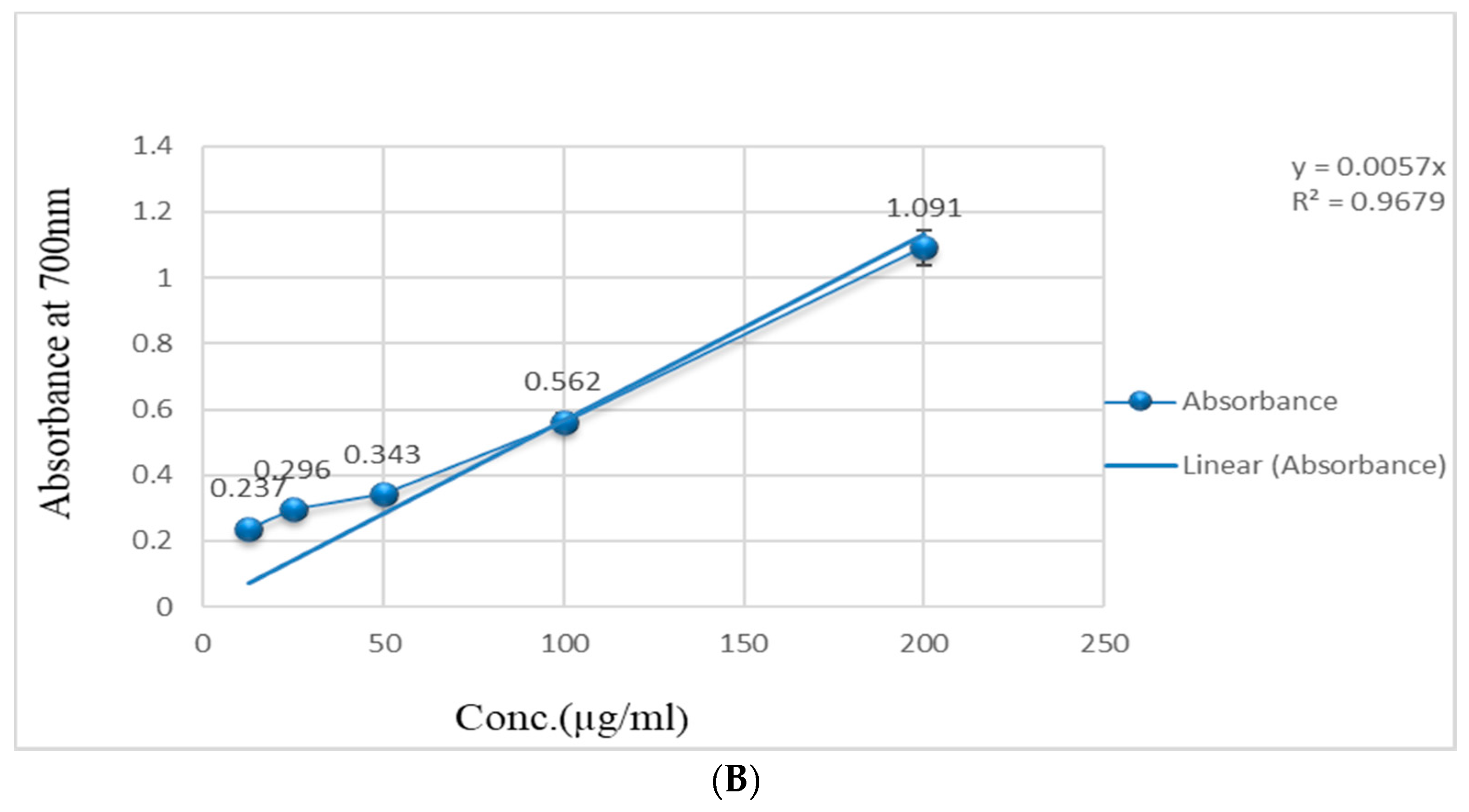
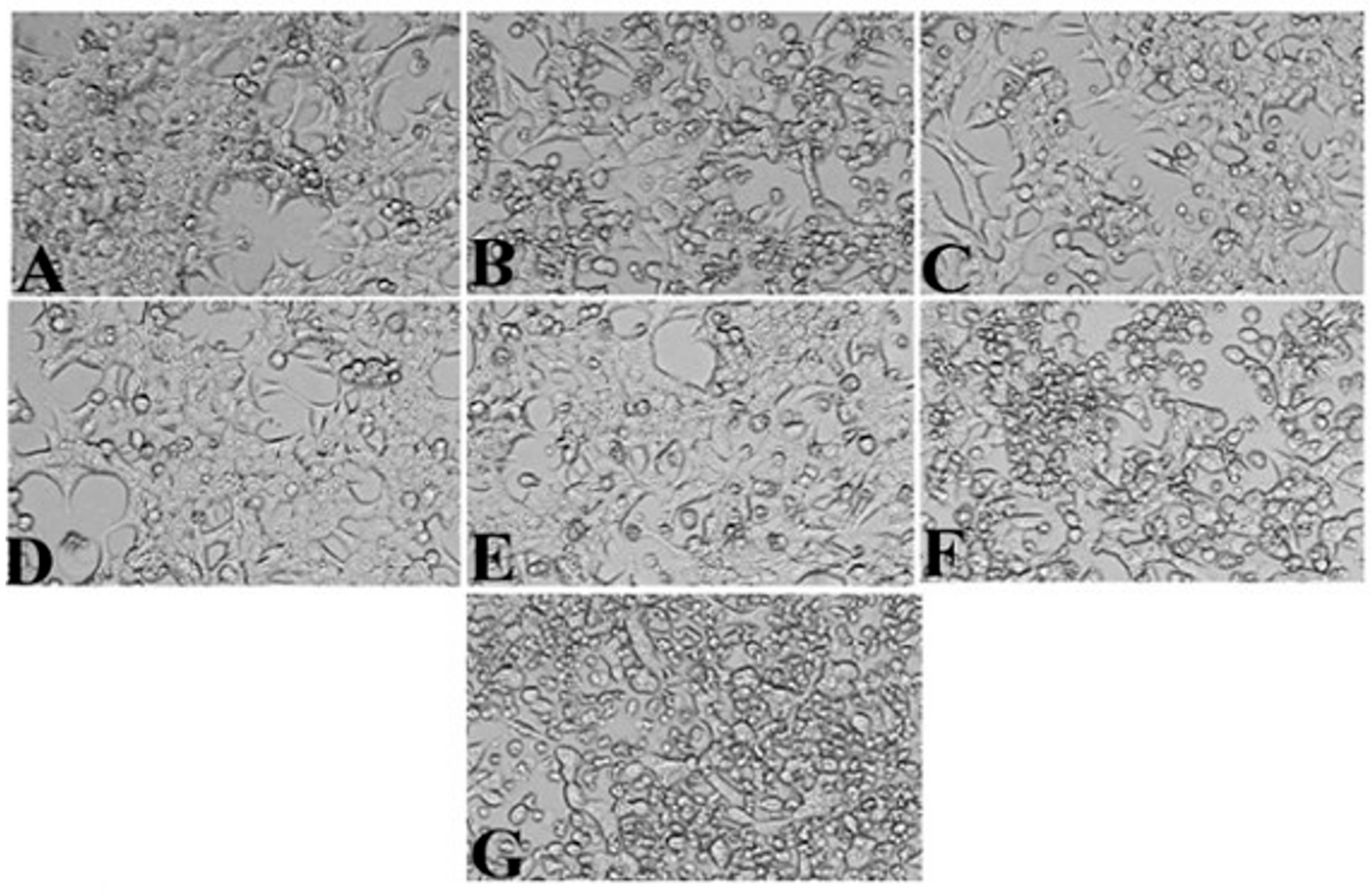

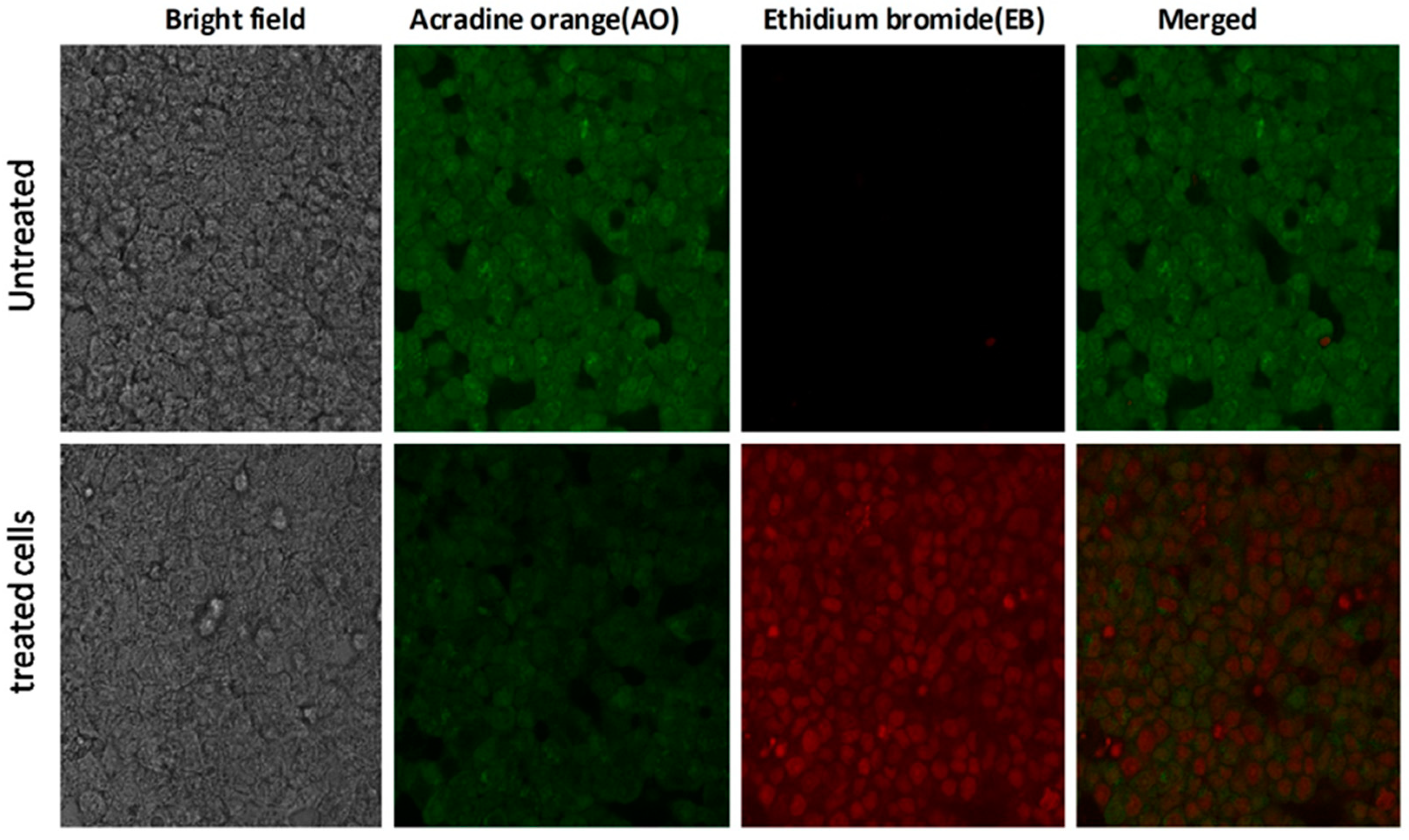
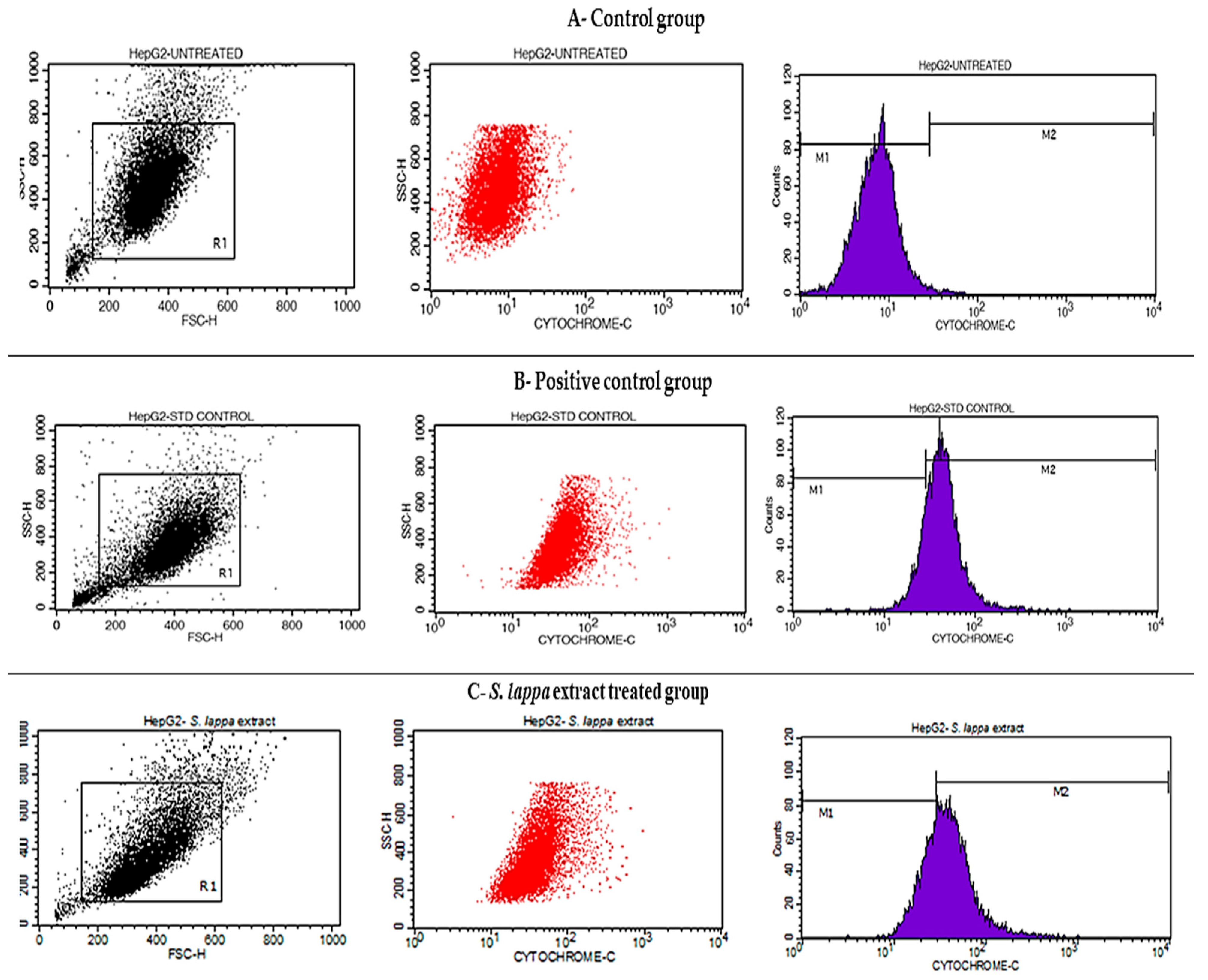
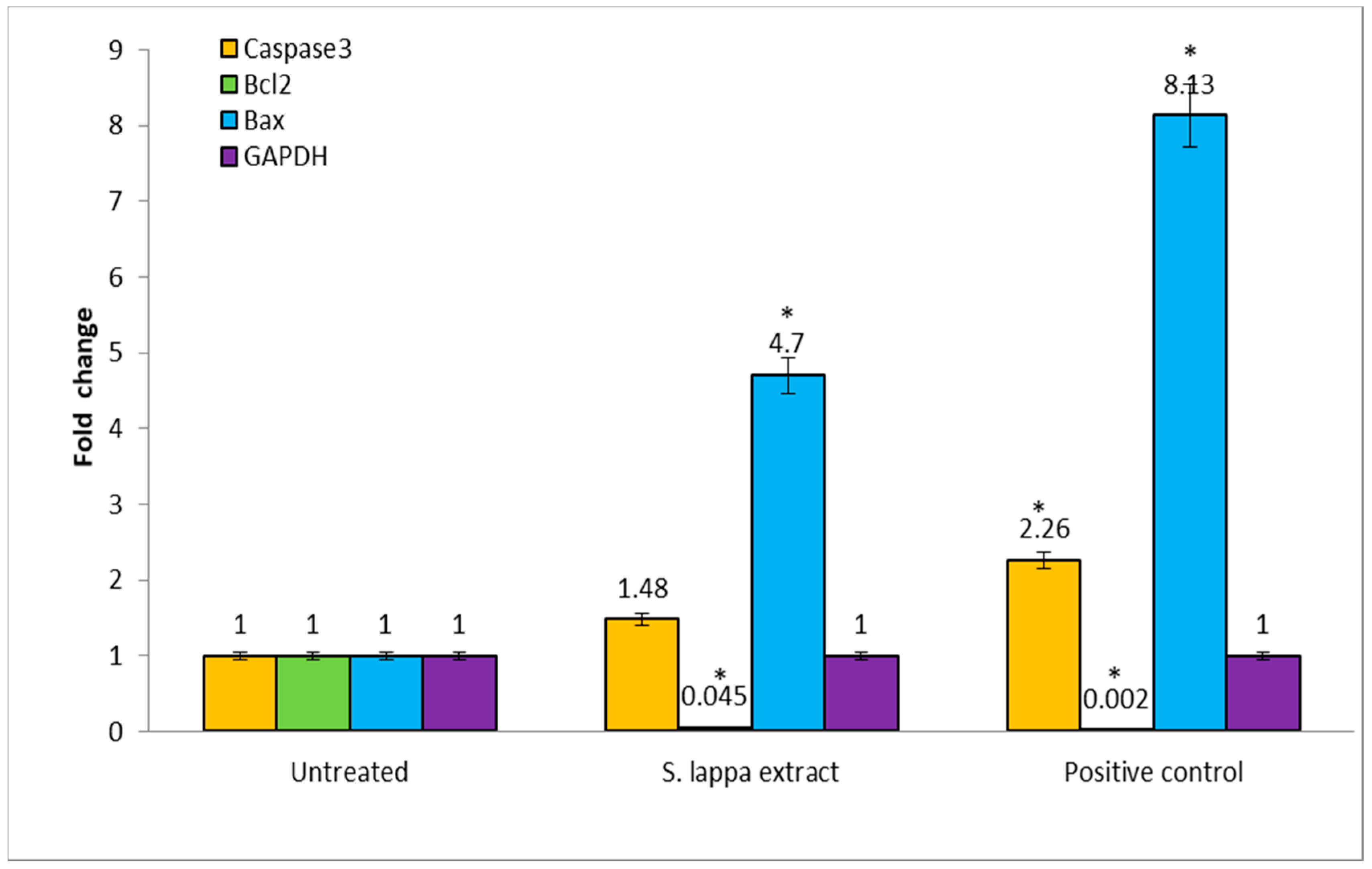
| cDNA Synthesis Reaction Mix Constituents | Vol in µL |
|---|---|
| 5X IScript reaction mix | 10 |
| Nuclease free water | 18 |
| RNA | 10 |
| Reverse transcriptase enzyme | 2 |
| Gene Name | Forward Primer Sequences | Reverse Primer Sequences | |
|---|---|---|---|
| 1 | Caspase 3 (210 bp) | 5′-TGTTTGTGTGCTTCTGAGCC-3′ | 5′-CACGCCATGTCATCATCAAC-3′ |
| 2 | Bcl-2 (141 bp) | 5′-ATGTGTGTGGAGACCGTCAA-3′ | 5′-GCCGTACAGTTCCACAAAGG-3′ |
| 3 | Bax (133 bp) | 5′-ATGTTTTCTGACGGCAACTTC-3′ | 5′-AGTCCAATGTCCAGCCCAT-3′ |
| 4 | GAPDH (113 bp) | 5′-TCAAGAAGGTGGTGAAGCAG-3′ | 5′-AAAGGTGGAGGAGTGGGTGT-3′ |
| Chemical Constituent | Aqueous Extract | Chloroform Extract | n-Butanol Extract | Ethyl Acetate Extract |
|---|---|---|---|---|
| Alkaloids | + | + | + | + |
| Steroids | + | + | + | − |
| Terpenoids | + | + | + | − |
| Flavonoids | + | + | + | + |
| Carbohydrates | + | + | + | + |
| Proteins | + | − | + | + |
| Phenols | + | + | + | + |
| Tannins | + | + | + | + |
| Saponins | + | + | − | − |
| Glycosides | + | + | + | + |
| Coumarins | + | − | + | + |
| Fixed oil | + | − | + | − |
| Sl No | Retention Time | Peak Area % | Name of the Compound | Molecular Formula |
|---|---|---|---|---|
| 1 | 4.289 | 2.8 | Dimethylsulfoxonium formylmethylide | C4H8O2S |
| 2 | 5.904 | 0.6 | (Z)-1-Chloro-2(methylsulfonyl)ethylene | C3H5ClO2S |
| 3 | 9.046 | 3.4 | cis,cis,cis-7,10,13-Hexadecatrienal | C16H26O |
| 4 | 10.321 | 0.1 | l-Gala-l-ido-octose | C8H16O8 |
| 5 | 10.866 | 0.9 | 2(3H)-Benzofuranone,6-ethenylhexahydro-6-methyl-3-methylene-7-(1-methylethenyl)-, [3aS-(3aα,6α,7β,7aβ)]- | C15H20O2 |
| 6 | 11.111 | 2.6 | Tricyclo [4.3.1.1(3,8)]undecane-1-carboxylic acid | C12H18O2 |
| 7 | 11.667 | 0.6 | Bohlmann k2631 | C15H20O2 |
| 8 | 12.072 | 0.7 | Costunolide | C15H20O2 |
| 9 | 12.312 | 0.5 | 2(3H)-Benzofuranone,6-ethenylhexahydro-6-methyl-3-methylene-7-(1-methylethenyl)-, [3aS-(3aα,6α,7β,7aβ)]- | C15H20O2 |
| 10 | 12.502 | 11.5 | Octadecanoic acid,9,10-dihydroxy-,methyl ester | C19H38O4 |
| 11 | 14.408 | 3.7 | 1,2-Dicaprin | C23H44O4 |
| 12 | 15.088 | 9.4 | Decanoic acid,1,2,3-propanetriyl ester | C33H62O6 |
| 13 | 15.433 | 1.1 | Vinyl decanoate | C12H22O2 |
| 14 | 15.588 | 6.8 | Decanoic anhydride | C20H38O3 |
| 15 | 15.688 | 4.8 | Decanoic acid, 2-hydroxy-1-(hydroxymethyl)ethyl ester | C13H26O4 |
| 16 | 17.234 | 8.8 | 3,5,9-Trioxa-4-phosphanonadecan-1-aminium, 4-hydroxy-N,N,N-trimethyl-10-oxo-7-[(1-oxodecyl)oxy]-, hydroxide, innersalt, 4- | C28H56NO8P |
| 17 | 17.469 | 17.3 | 1,3-Dicaprin | C23H44O5 |
| 18 | 17.714 | 2.9 | Estra-1,3,5(10)-trien-17′-ol | C18H24O |
| 19 | 18.259 | 0.6 | 9,10-Secocholesta-5,7,10(19)-triene-3,24,25-triol, (3%,5Z,7E)- | C27H44O3 |
| 20 | 18.535 | 2.2 | 2-Bromotetradecanoic acid | C14H27BrO2 |
| 21 | 18.860 | 1.7 | Cyclopropanetetradecanoic acid, 2-octyl-, methyl ester | C26H50O2 |
| 22 | 19.385 | 2.0 | 1-Heptatriacotanol | C37H76O |
| 23 | 19.870 | 0.3 | Digitoxin | C41H64O13 |
| 24 | 20.550 | 0.1 | Oleic Acid | C18H34O2 |
| 25 | 21.021 | 0.2 | 1,25-Dihydroxyvitamin D3, TMS derivative | C30H52O3Si |
| 26 | 21.386 | 0.3 | Cucurbitacin b, 25-desacetoxy- | C30H44O6 |
| 27 | 21.681 | 1.0 | 2-Myristynoyl pantetheine | C25H44N2O5S |
Cells Group   | % of Cells Expressed Cytochrome C |
|---|---|
| Cell Control | 0.64 |
| Positive Control | 82.89 |
| S. lappa | 67.78 |
Publisher’s Note: MDPI stays neutral with regard to jurisdictional claims in published maps and institutional affiliations. |
© 2021 by the authors. Licensee MDPI, Basel, Switzerland. This article is an open access article distributed under the terms and conditions of the Creative Commons Attribution (CC BY) license (https://creativecommons.org/licenses/by/4.0/).
Share and Cite
Alotaibi, A.A.; Bepari, A.; Assiri, R.A.; Niazi, S.K.; Nayaka, S.; Rudrappa, M.; Nagaraja, S.K.; Bhat, M.P. Saussurea lappa Exhibits Anti-Oncogenic Effect in Hepatocellular Carcinoma, HepG2 Cancer Cell Line by Bcl-2 Mediated Apoptotic Pathway and Mitochondrial Cytochrome C Release. Curr. Issues Mol. Biol. 2021, 43, 1114-1132. https://doi.org/10.3390/cimb43020079
Alotaibi AA, Bepari A, Assiri RA, Niazi SK, Nayaka S, Rudrappa M, Nagaraja SK, Bhat MP. Saussurea lappa Exhibits Anti-Oncogenic Effect in Hepatocellular Carcinoma, HepG2 Cancer Cell Line by Bcl-2 Mediated Apoptotic Pathway and Mitochondrial Cytochrome C Release. Current Issues in Molecular Biology. 2021; 43(2):1114-1132. https://doi.org/10.3390/cimb43020079
Chicago/Turabian StyleAlotaibi, Amal A., Asmatanzeem Bepari, Rasha Assad Assiri, Shaik Kalimulla Niazi, Sreenivasa Nayaka, Muthuraj Rudrappa, Shashiraj Kareyellapa Nagaraja, and Meghashyama Prabhakara Bhat. 2021. "Saussurea lappa Exhibits Anti-Oncogenic Effect in Hepatocellular Carcinoma, HepG2 Cancer Cell Line by Bcl-2 Mediated Apoptotic Pathway and Mitochondrial Cytochrome C Release" Current Issues in Molecular Biology 43, no. 2: 1114-1132. https://doi.org/10.3390/cimb43020079
APA StyleAlotaibi, A. A., Bepari, A., Assiri, R. A., Niazi, S. K., Nayaka, S., Rudrappa, M., Nagaraja, S. K., & Bhat, M. P. (2021). Saussurea lappa Exhibits Anti-Oncogenic Effect in Hepatocellular Carcinoma, HepG2 Cancer Cell Line by Bcl-2 Mediated Apoptotic Pathway and Mitochondrial Cytochrome C Release. Current Issues in Molecular Biology, 43(2), 1114-1132. https://doi.org/10.3390/cimb43020079









